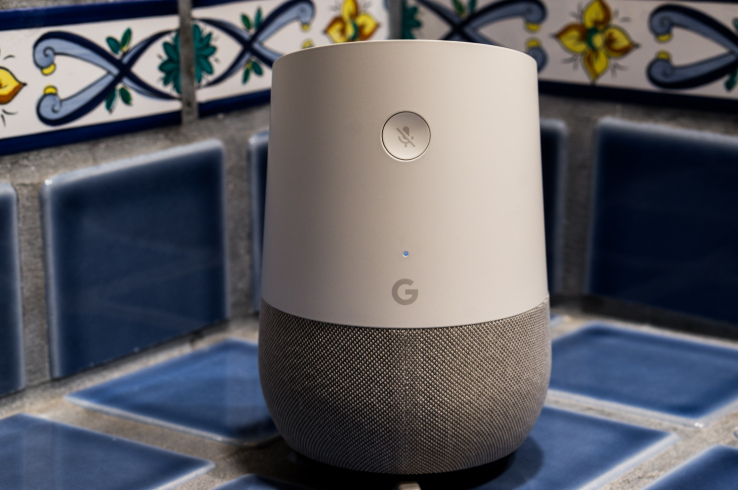

Google Home has spent the past year catching up. No surprise, really. The Echo had a roughly two-year head start on the device. This week, the smart home hub celebrated the one-year anniversary at I/O of its announcements with a few key additions aimed at making its product a true competitor.
From the looks of it, the company is playing the long game here, seeding mobile devices with Assistant and rolling out subtle upgrades that make its device less of a blunt instrument than Amazon’s offering. Certainly the company has the data infrastructure and mobile market share to find that success. But subtly and robustness are hard plays when it comes to the consumer market — particularly one utterly dominated by a competitor. If Google wants to set itself apart, it’s going to have make a show of it.
Two years is a pretty large gap to overcome in the tech world, particularly when one company has managed to become synonymous with the category in the meantime. Google no doubt understood the shadow it would be attempting to crawl out of when it launched its device at last year’s event – including, but not limited at least a couple of years of being referred to by the press and consumers as “Google Echo.”
The company has clearly spent much of the past year working to correct this. When the product was announced, the differences between the devices were pretty pronounced. From a lack of features to third-party partners, the gap was notable. And besides, the Echo was already a surprise success for the Amazon. Many of those who were interested in the category had already picked one up – and it’s hard to imagine that smart home hubs will have a swifter upgrade cycle than, say, tablet.
Google’s made a slight dent in the overall numbers, but as it stands, Amazon’s expected to control around 70-percent of the voice-controlled speaker market this year, according to numbers released earlier this month. Google’s numbers are hovering at around a third of that amount. With Amazon adding a slew of options into the mix including, perhaps most notably, the low-cost Echo Dot, it’s easy to see that domination continuing.
At I/O, Google execs noted that the company doesn’t plan to continue playing second fiddle to Amazon – and really, what else did you expect it to say? The company demonstrated its plans with a handful of new features that were a combination of playing catch up and pulling out ahead.
The company added on-device calling, for instance, a feature Amazon introduced a while back. Home’s ability to identify voices means it can figure out non-proper names like “mom.” The device is also broadening the functionality to all of a user’s contacts, versus recently released Amazon’s solution, whose calls are limited to other Echoes and devices running the Alexa app.
Features like this and the new “proactive notifications” are starting to paint a picture of Home as a more capable device in its relatively limited feature set. It’s clear that the company is working to build a more robust product than Amazon’s offering, which appeared to begin life as a backdoor channel for its AI assistant, with the company lacking the mobile channels of a Google or Apple.
At this rate, Google should make some serious inroads in market share a couple of years from now, assuming Apple doesn’t blow everyone’s minds with the also late to party smart hub some rumors have pointed to for a WWDC debut next month. And certainly there are plenty of products in the company’s portfolio that can be categorized as a slow burner.
But if the product is going to be truly competitive, now’s the time to become more than the Google Echo and offer something truly new.

